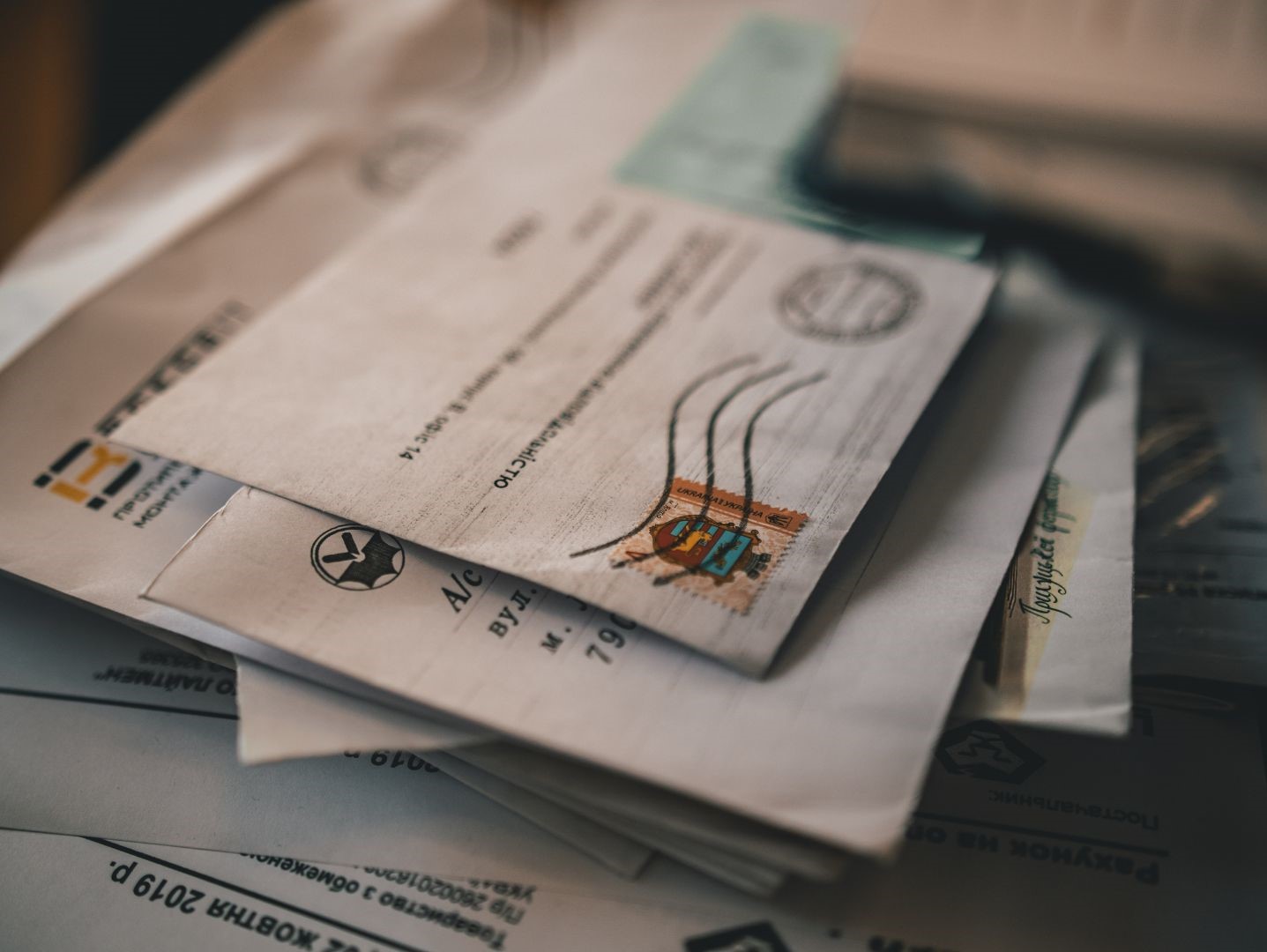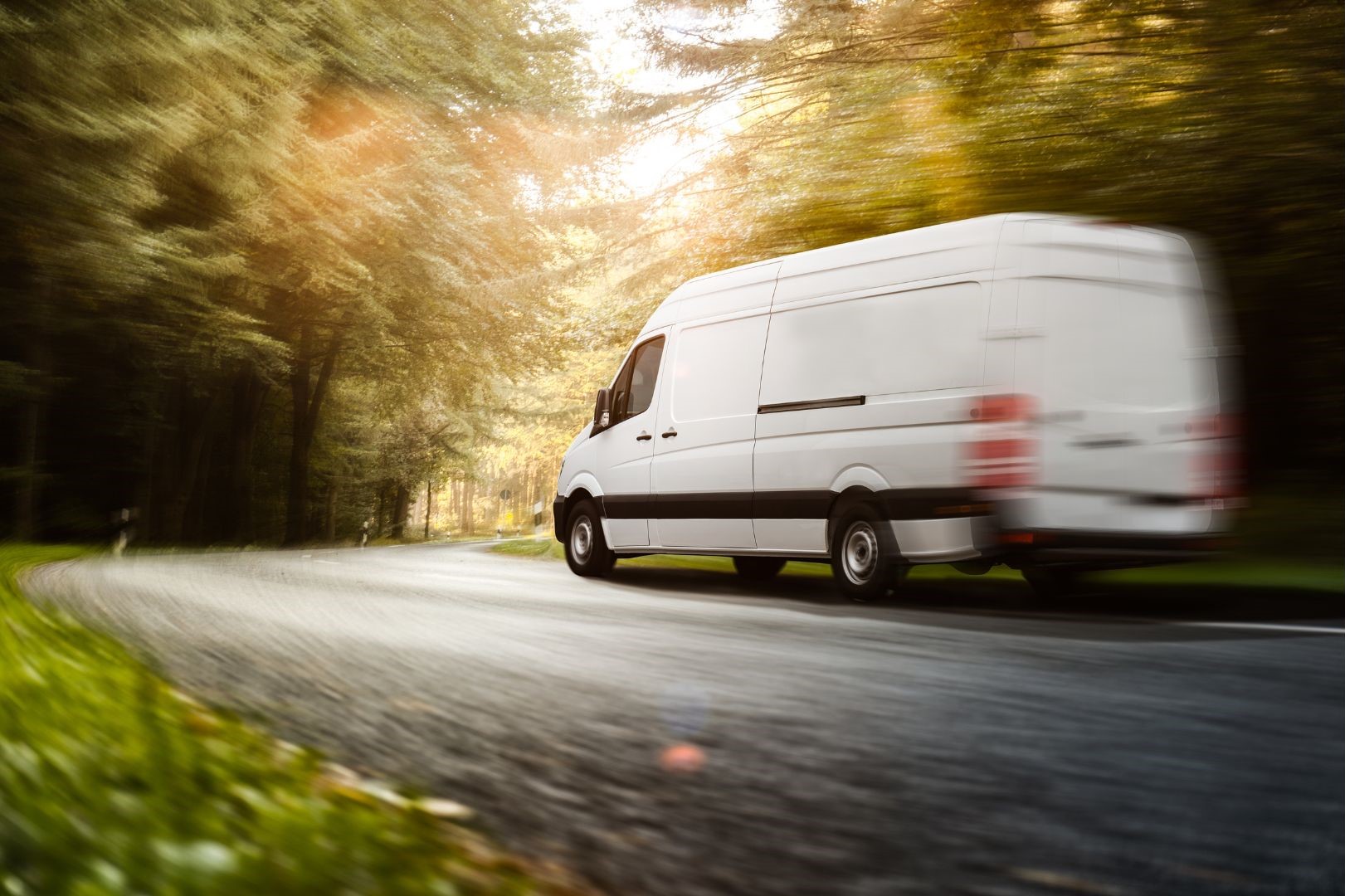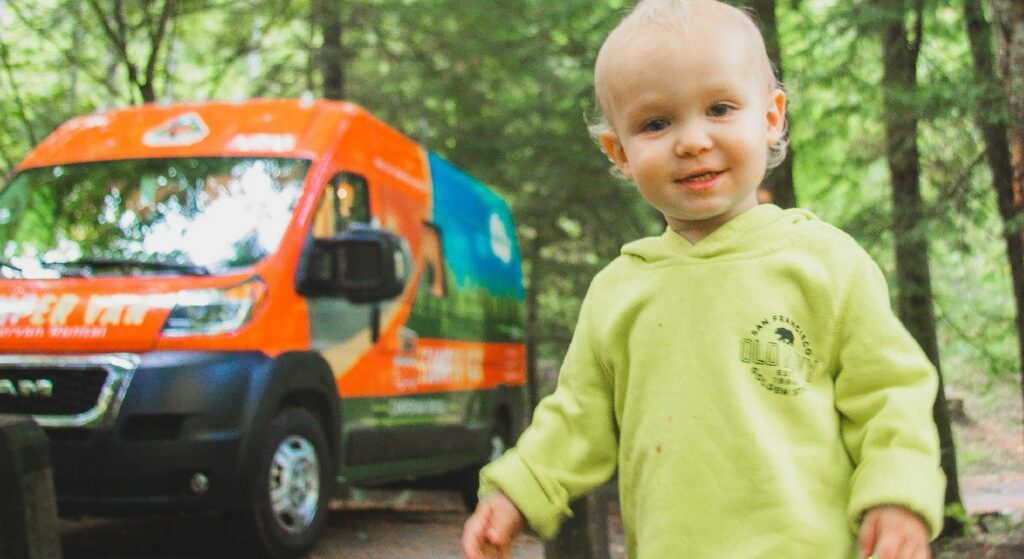Traveling full-time and posting up in epic boondocking locations is great, but it can be challenging when you need to receive mail or packages. But don’t let the lack of a permanent address deter you from living the nomadic life of your dreams!
We had the opportunity to talk with Brooke, a full-time vanlifer, about how she’s gotten mail while traveling, and she gave us a ton of great tips! Read on to become a pro on getting mail when you are on the road!
Table of Contents

Tips on Getting Mail from a Full-Time Vanlifer
There are plenty of options for receiving mail as a full-time van lifer. After living and traveling in my campervan for more than three years now, I’ll share what I do and what your options are when it comes to how to get mail on the road.
1. Post Office General Delivery
One way to receive mail or packages is through the United States Postal Service (USPS) General Delivery. This is a free service for mail sent through USPS, so it won’t work with FedEx, UPS, or DHL. I’ve had great luck with general delivery, but I usually only use it in small towns. It can be a bit more difficult in big cities.
To use general delivery, the mailer needs to address the item with your name, the words “general delivery,” town, state, and zip code, plus the digits 9999. Here’s an example:
Jane Doe
General Delivery
Jackson, WY 83002-9999
You’ll just need to show your ID when you go in to pick up the package.
Be sure to call the specific post office location to verify they accept general delivery packages and confirm the address of the location where you’ll pick up your package. In small towns, this is simple as there’s only one post office, but bigger cities might have many post offices, and the last thing you want is to be bouncing between post office locations looking for a package.
Pros: typically free, no registration required, packages are held for anywhere from 7-30 days (verify at each specific location)
Cons: not available at all post offices, difficult to figure out which location general deliveries go to in a city or town with multiple post offices, only works with USPS packages
2. Mail Services for Full-time RVers, Travelers, and Digital Nomads
Mail forwarders and virtual mailboxes have revolutionized the game for vanlifers and full-time RVers. Through either an app or email, most of these services will send a picture of every piece of mail that comes in, and you can choose to have it opened and scanned, shredded, recycled, or forwarded.
I enjoy not dealing with all the paper mail anymore and take comfort in knowing it can be safely and securely discarded and recycled. Plus, I can change the mail forwarding address as many times as I want and store several addresses based on my current location.
Most mail forwarding services have a few different monthly and annual fee plans available based on the volume of mail you receive, and forwarding mail does have an additional cost.
I personally use a mail forwarding service out of South Dakota called The South Dakota Residency Center (SDRC). The folks at SDRC are extremely helpful with information about establishing domicile, voter, and vehicle registration; obtaining health and vehicle insurance; and more. Their mail service is operated through Anytime Mailbox. I love it and have had great communication and support in the past few years that I’ve used them.
*It’s important to note that to prevent fraud, some banks or credit card companies allow a mailing service to be used as your mailing address, but will not accept these addresses as your permanent address. In this case, I use a family member or friend’s address as the permanent one and my mail forwarding service address as the mailing address. Everything still comes to my mailbox.
Some other mail forwarding services are:
- Escapees Mail Forwarding Service
- America’s Mailbox
- iPostal1
- Your Best Address
- Traveling Mailbox
- Dakota Post
Pros: easy to use, affordable, lots of different options and locations to choose from
Cons: some banks or companies still require a more permanent mailing address, costs can add up if you’re constantly forwarding mail


3. Amazon Locker or Amazon Hub
Amazon Prime members have the advantage of 2-day shipping in most locations, which is a big benefit for travelers who don’t have time to wait around for packages. Located at grocery stores, convenience stores, and other businesses, Amazon lockers are a simple way to pick up small packages ordered through Amazon online. If you aren’t able to pick up the package in a few days, it will be returned to Amazon by default and you’ll be refunded for your purchase.
For larger packages, you might need to look for a full-service Amazon Hub or Counter pickup locations. That new paddleboard you snagged on Black Friday just isn’t going to fit in a tiny Amazon locker!
Add the locker, hub, or counter location to your address book, and select it when you check out. It makes me laugh every time I go into my family Amazon account and see all the different shipping addresses because of my travels.
Pros: easy to use, quick shipping on most items, some lockers are available 24 hours
Cons: not all items can be delivered to lockers or hubs, 3-day hold limit and packages will be sent back

4. UPS store
I tend to use UPS stores frequently to pick up Amazon packages when lockers or hubs aren’t available.
Each UPS Store is franchised, and different owners can mean different rules.
For example, some charge a flat rate per package they receive for you. You simply show up, say you had a package delivered there, pay the fee, and get your things. One particular location I went to made me sign a multiple-page “mailbox agreement” just to pick up a single package! It’s hit or miss on what you’ll have to do, but overall, UPS stores are a safe and secure bet if you need to receive something on the road.
Pros: all locations receive packages; safe and secure option; you can also mail packages, print, and make copies (for an additional cost)
Cons: fees can be costly and vary by location, limited to hours UPS stores are open (ex. some are closed on weekends)
5. Monthly Mailbox Rental
If you’re planning to stay in a particular area of the US for an extended period of time, you can consider opening a mailbox for a month or two.
Private personal mailbox rentals, such as UPS boxes or those through companies like Postnet, qualify as a residential address, so you can receive items from any shipping company, including those that specify no P.O. (post office) boxes.
I rented a UPS mailbox in Brooklyn when I lived in my van there for nine months. They required 3-month contracts, which happened to work out for me at the time.
Pros: residential addresses can receive packages from UPS, FedEx, DHL, and USPS; safe and secure
Cons: sometimes can require a several-month contract, can be expensive, no 24/7 access
6. Using a Friend's Address
Another way to get mail on the road is to use a friend’s address. The more I travel, the more I make friends all over the place. It’s not only nice to have familiar faces as I move around, but it can be helpful with regard to mail, too!
For example, I lived in Phoenix for many years and still have friends there. When I travel through the area, I have mail forwarded from my South Dakota mail forwarding service to a friend’s house or apartment. Then, I get to visit with them and collect my mail!
Pros: free, encourages visits with friends
Cons: coordinating schedules with busy friends can be difficult, feels burdensome if used too much
Advantages of Getting Mail On the Road
Some subscription services, such as Amazon or Thrive Market, allow you to change your shipping address as needed, which can make getting shipments easier. After all, flexibility is key in van life!
No more junk mail! That’s right, no more election flyers, coupons for businesses you’ve never heard of, or credit card offer spam. I don’t miss having to sort through piles of junk mail to see if I had any worthwhile pieces of mail!
Another major advantage I’ve found with getting mail on the road is that you can make large purchases and have them delivered as you travel in states without a state sales tax. For example, I had a new laptop delivered to Montana one summer when I was traveling through and saved several hundred dollars on taxes!
How to Get Mail on The Road Conclusion
There are benefits and challenges to living vanlife, but mail doesn’t have to be a struggle! Based on the type of mail you need to receive and how long you’ll be traveling, you have choices! Bookmark this article, and you’ll be a pro at getting mail on the road in no time.


